Art of war: John Pawson makes a wartime base a home for The Feuerle Collection

When British architect John Pawson was asked to create a museum for The Feuerle Collection, in a Second World War telecommunications base in Kreuzberg, Berlin, he didn’t need much persuading. ‘You’re just awestruck when you come in aren't you?’ he says of the 1942 building, which is his first project in the city. ‘It is just so massive, so monumental, with such a charged atmosphere. This is a building designed by an engineer, who had real taste and an eye for proportion and scale. We didn’t want to change anything here.’
Still, the team has done a huge amount of work to make this two-storey, 6,500 sq m enclosed space a functioning museum. The bunker was specifically designed to protect the telecommunication system during the war; the high-quality concrete walls and ceiling are 2m and 3.5m thick, respectively, and the Allies were unable to penetrate them. ‘Physically it was a big challenge for us’, admits Pawson. 'We had to move slowly to keep our intervention subtle and modest.' In the two years of construction, much time was spent recovering the special texture of the aged concrete surfaces – by removing the plaster on the columns, the graffiti and accumulated dirt on the walls, floors and ceilings.
The chicane at the entrance that once acted as a bomb shield is now a passage leading to a unique experience. Starting from the basement, one enters the Sound Room to a background of minimalist tones and silences created by American composer John Cage. Until you enter the vast main exhibition room there is no natural light and the place is left in near darkness, forcing you to readjust all your senses to negotiate the space. Your eyes are then attracted to the ingeniously curated spotlights and centuries-old stone and wood sculptures from the Khmer Empire that seem to appear from nowhere.
During construction the team encountered flooding problems, as a canal runs next to the building. ‘It was rather beautiful when it was flooded; the columns were mirrored in the water like the cisterns in Istanbul,’ says Pawson. And he decided to keep this accidental art piece, calling it the Lake Room. ‘It is essential to preserve a space like the Lake Room, to let the structure breathe, and not intervene too much,' explains collector and museum founder Désiré Feuerle. ‘In that aspect Pawson is really a master – he shows respect for the building in an elegant way.’
Feuerle also brought to the museum his fascination with Asian incense ceremonies, a spiritual tradition dating back over 2,000 years. Pawson planned the Incense Room on an elevated platform in the basement, that features walls made of two-way mirrors, so one can focus on the peace of the ceremonial room while not losing contact with space outside. A set of incense tables and stools were designed especially for the ceremony, crafted by the last carpenter to master the art of traditional Chinese joinery, in precious African blackwood. They show a hint of Chinese spirit together with the architect’s contemporary minimalist touch.
The museum’s exhibits extend from the 7th century to the present; Imperial Chinese lacquer furniture sitting with contemporary works by artists including Nobuyoshi Araki, Cristina Iglesias, Anish Kapoor and Zeng Fanzhi. When talking about this otherworldly, almost religious experience, Feuerle says: ‘The aim is to have something different. Everything today is so quick, so commercial. I like to support the idea of quality.’ The Feuerle Collection was opened for preview across Gallery Weekend Berlin. It will next host the Berlin Biennale from June to September, and open officially in October.
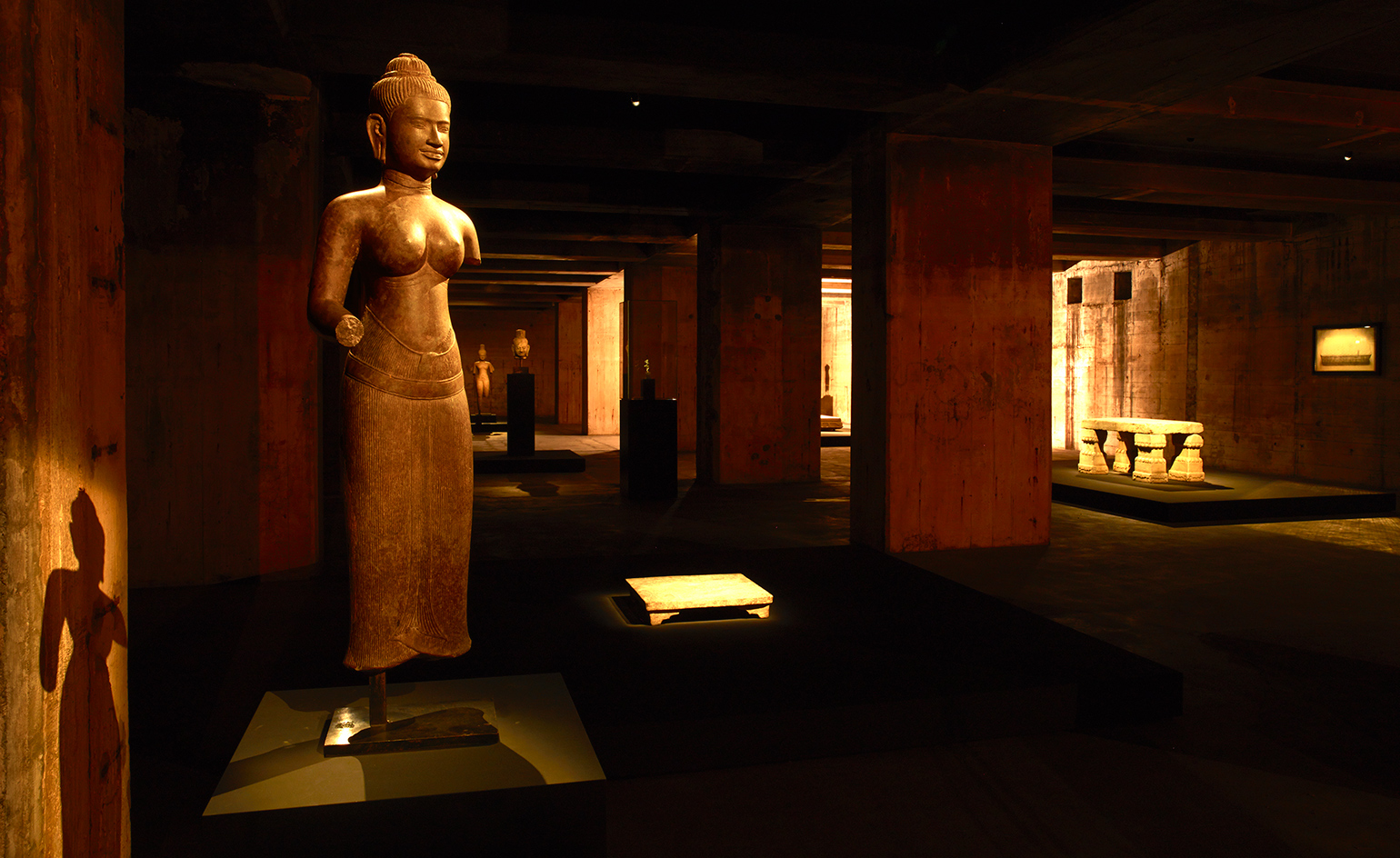
Starting from the basement, one enters the Sound Room to a background of minimalist tones and silences created by American composer John Cage.
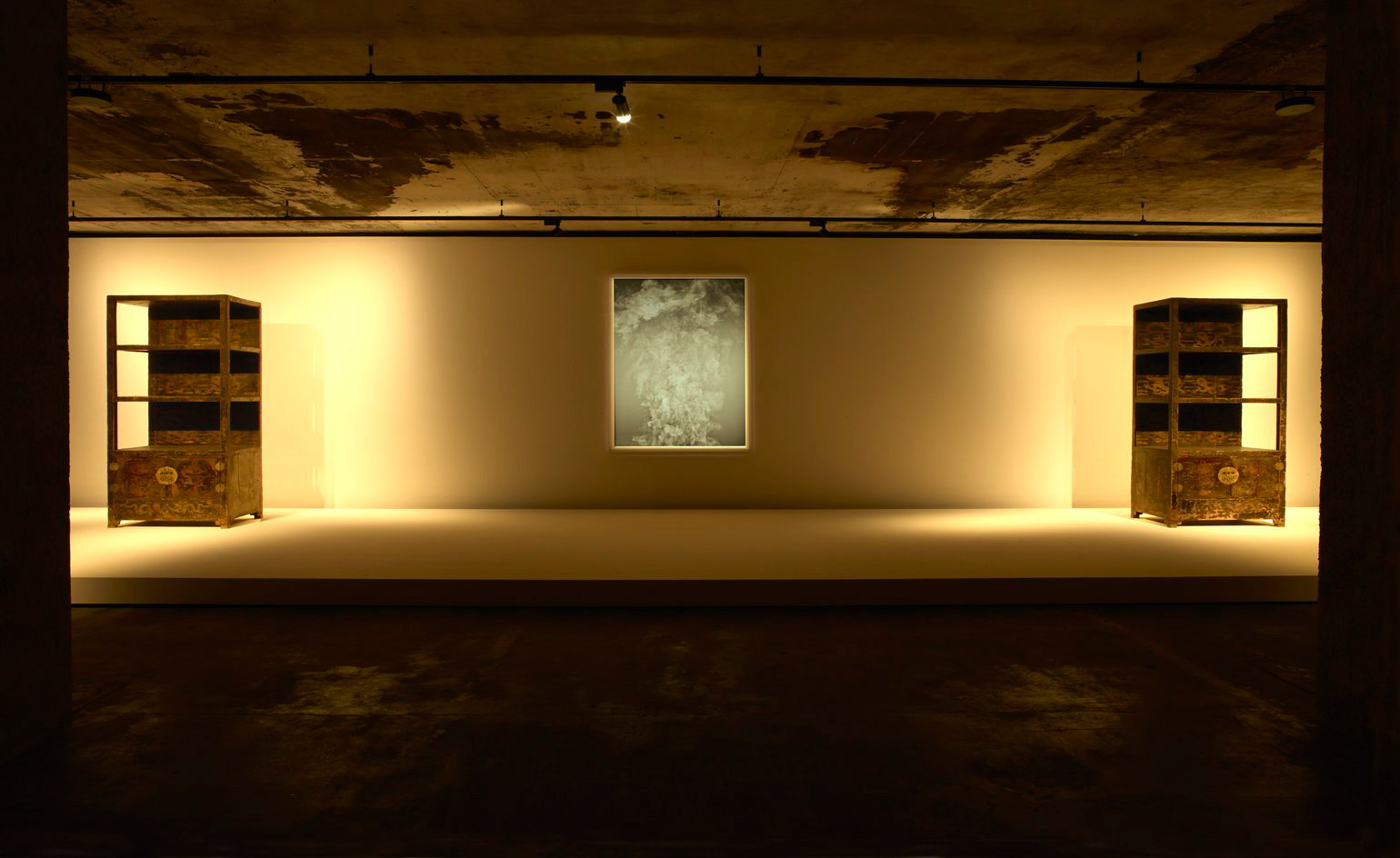
Until you enter the vast main exhibition room there is no natural light and the place is left in near darkness, forcing you to readjust your senses to negotiate the space.
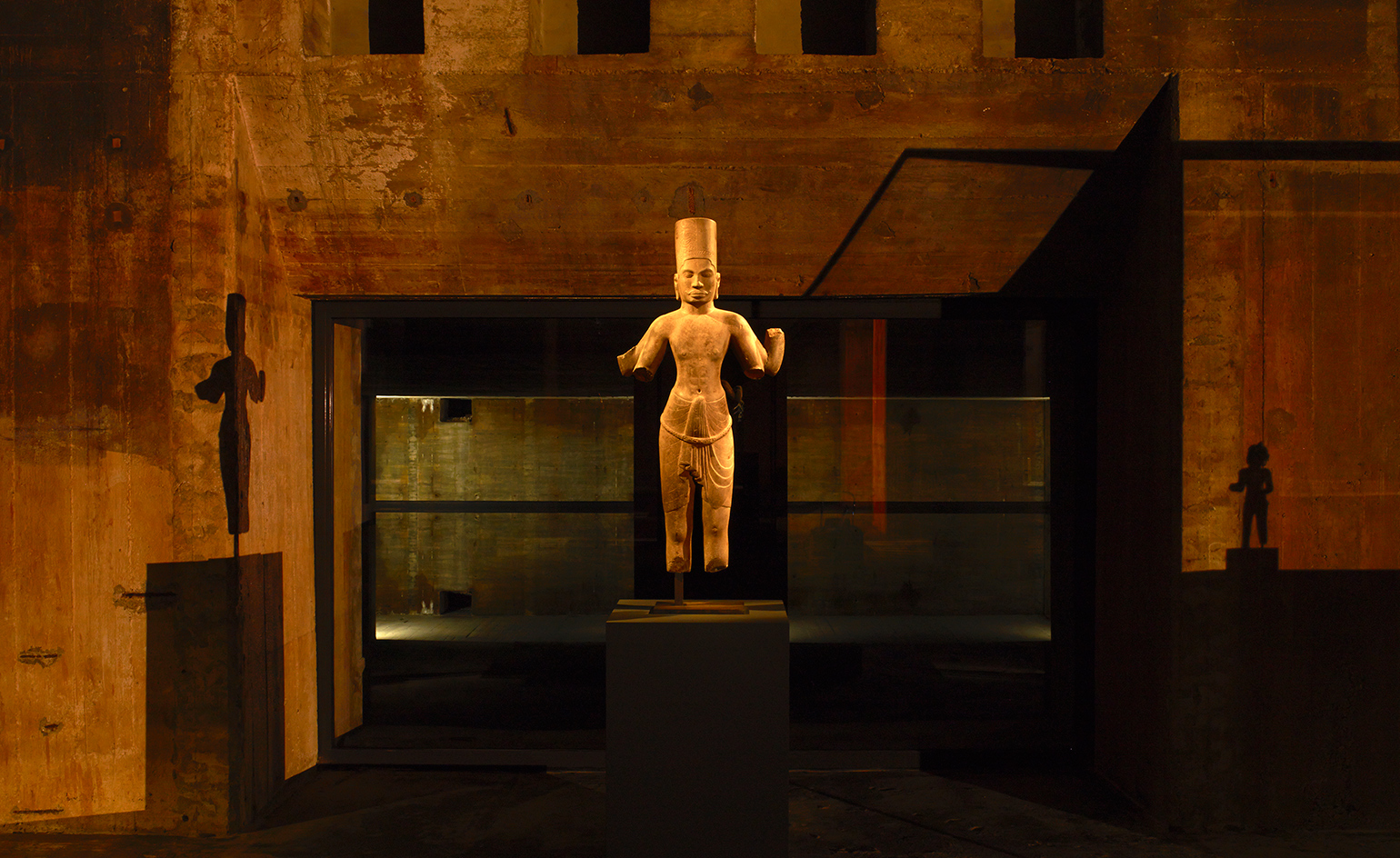
Your eyes are then attracted to the ingeniously curated spotlights and centuries-old stone and wood sculptures from the Khmer Empire that seem to appear from nowhere.
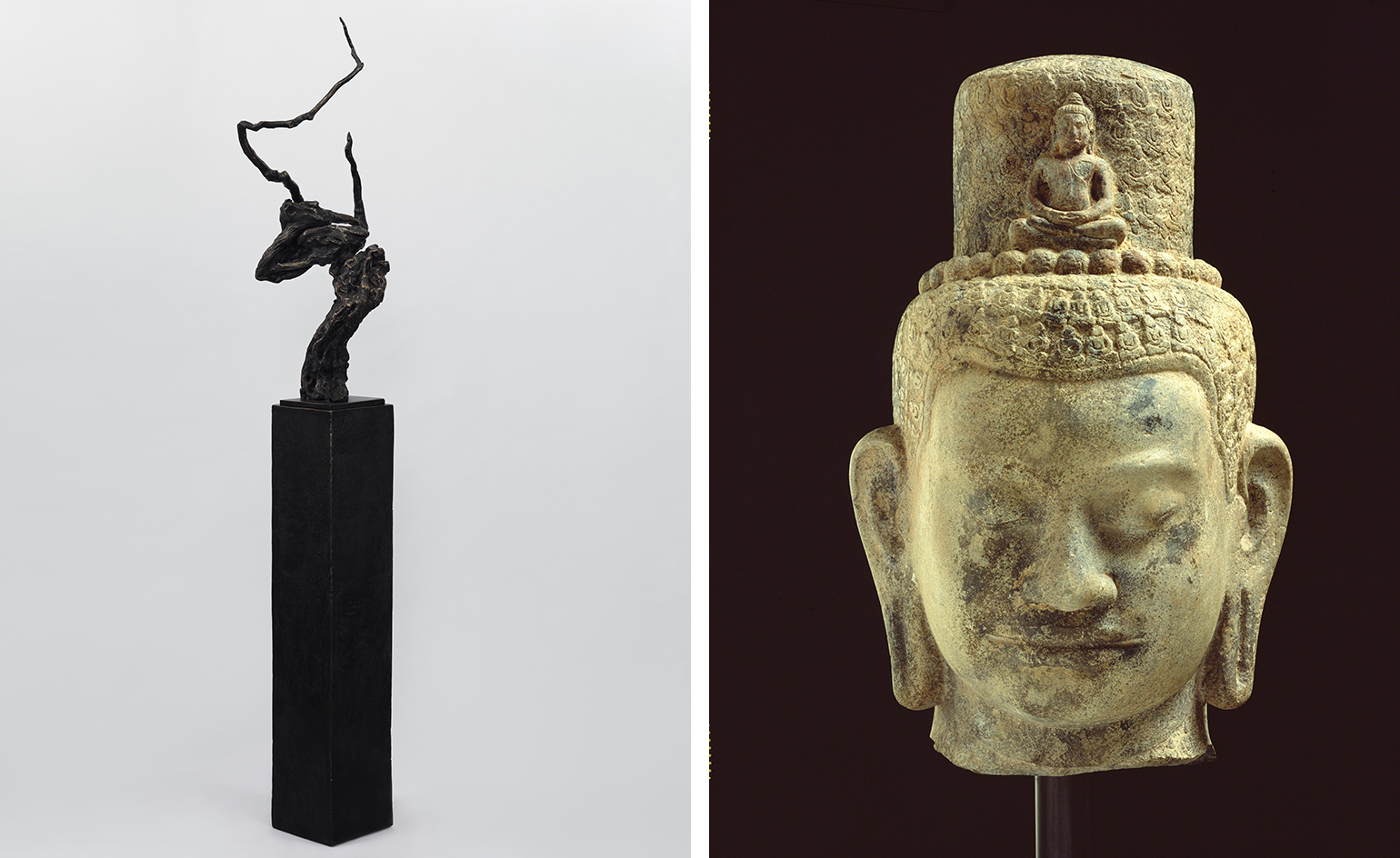
The museum’s exhibits extend from the 7th century to the present; with Imperial Chinese lacquer furniture together with contemporary works by artists including Nobuyoshi Araki, Cristina Iglesias, Anish Kapoor and Zeng Fanzhi. Pictured left: Untitled, by Zeng Fanzhi, 2009. Right: Head of Avalokiteshvara Bayon, one of the Khmer sculptures, c.12th/13th centuries
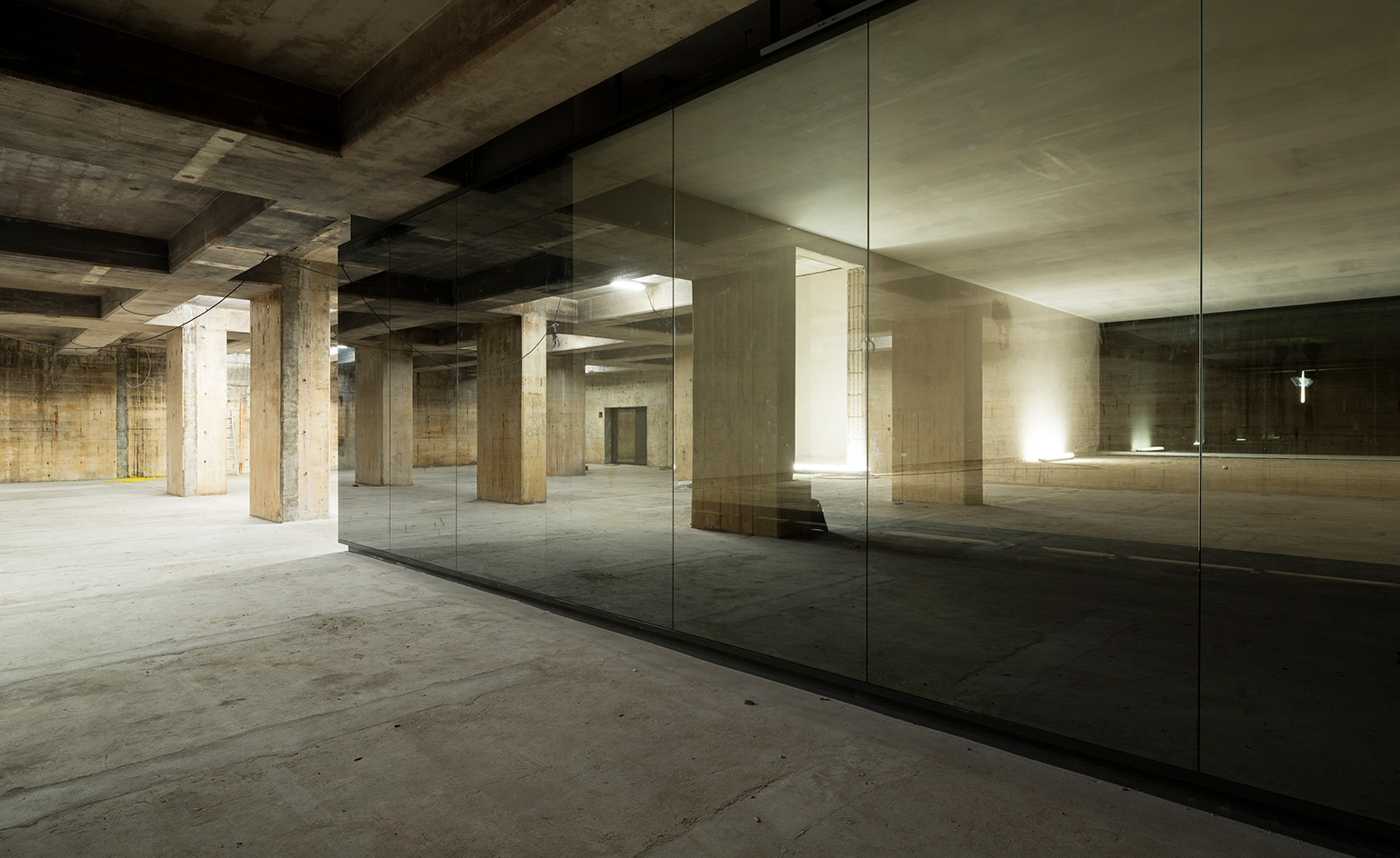
The team has done a huge amount of work to make the two-storey, 6,500 sq m, solid concrete space a functioning museum. Pictured: the Second World War telecommunications base in Kreuzberg, before the Collection was installed.
INFORMATION
For more information, visit The Feuerle Collection’s website
ADDRESS
The Feuerle Collection
Hallesches Ufer 70
10963 Berlin
Wallpaper* Newsletter
Receive our daily digest of inspiration, escapism and design stories from around the world direct to your inbox.
Yoko Choy is the China editor at Wallpaper* magazine, where she has contributed for over a decade. Her work has also been featured in numerous Chinese and international publications. As a creative and communications consultant, Yoko has worked with renowned institutions such as Art Basel and Beijing Design Week, as well as brands such as Hermès and Assouline. With dual bases in Hong Kong and Amsterdam, Yoko is an active participant in design awards judging panels and conferences, where she shares her mission of promoting cross-cultural exchange and translating insights from both the Eastern and Western worlds into a common creative language. Yoko is currently working on several exciting projects, including a sustainable lifestyle concept and a book on Chinese contemporary design.
-
 Nikos Koulis brings a cool wearability to high jewellery
Nikos Koulis brings a cool wearability to high jewelleryNikos Koulis experiments with unusual diamond cuts and modern materials in a new collection, ‘Wish’
By Hannah Silver
-
 A Xingfa cement factory’s reimagining breathes new life into an abandoned industrial site
A Xingfa cement factory’s reimagining breathes new life into an abandoned industrial siteWe tour the Xingfa cement factory in China, where a redesign by landscape specialist SWA Group completely transforms an old industrial site into a lush park
By Daven Wu
-
 Put these emerging artists on your radar
Put these emerging artists on your radarThis crop of six new talents is poised to shake up the art world. Get to know them now
By Tianna Williams
-
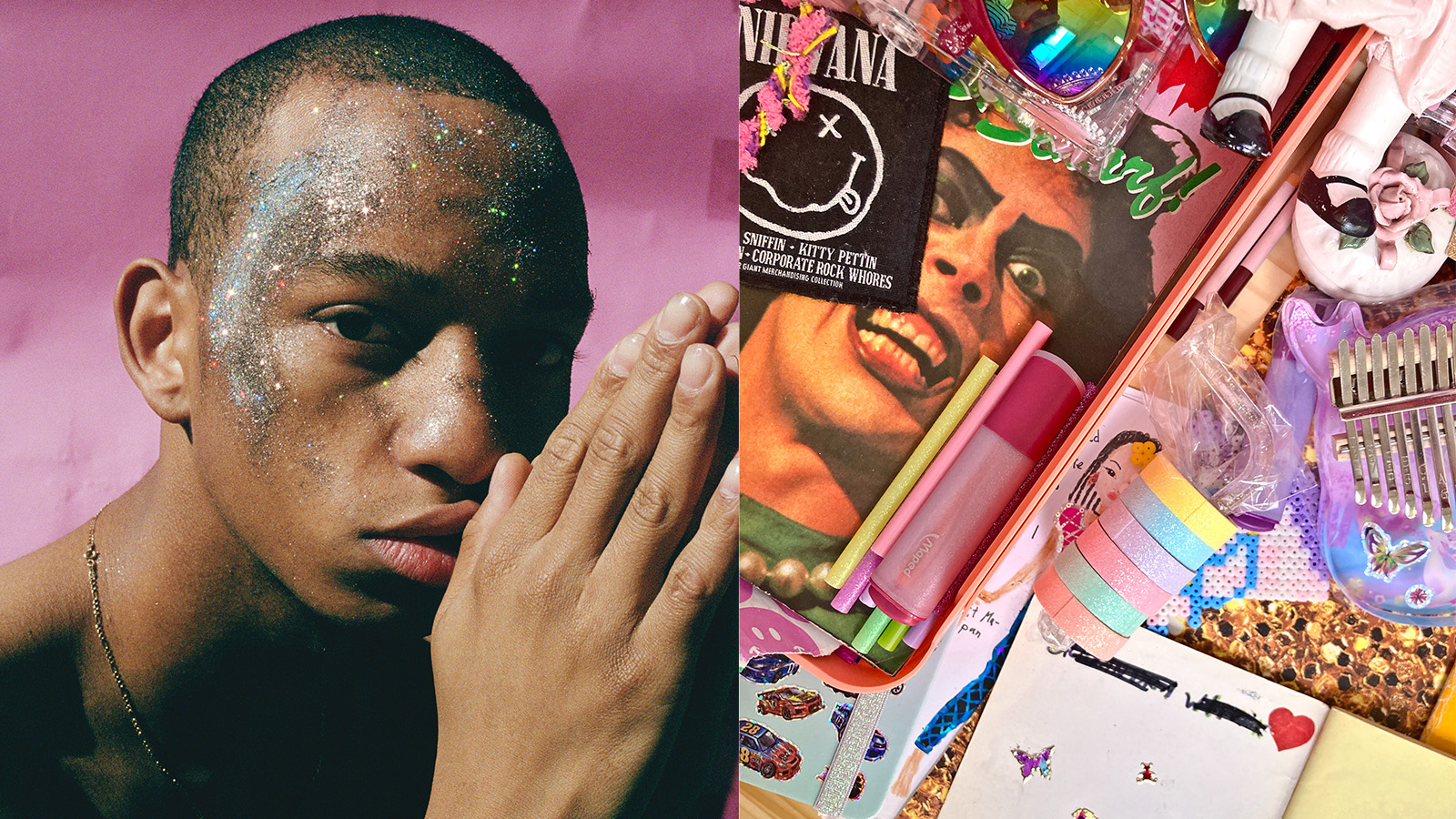 MK&G’s ‘Glitter’ exhibition: a brilliant world-first tribute to sparkle and spectacle
MK&G’s ‘Glitter’ exhibition: a brilliant world-first tribute to sparkle and spectacleMK&G’s latest exhibition is a vibrant flurry of sparkles and glitter with a rippling Y2K undercurrent, proving that 'Glitter is so much more than you think it is'
By Hiba Alobaydi
-
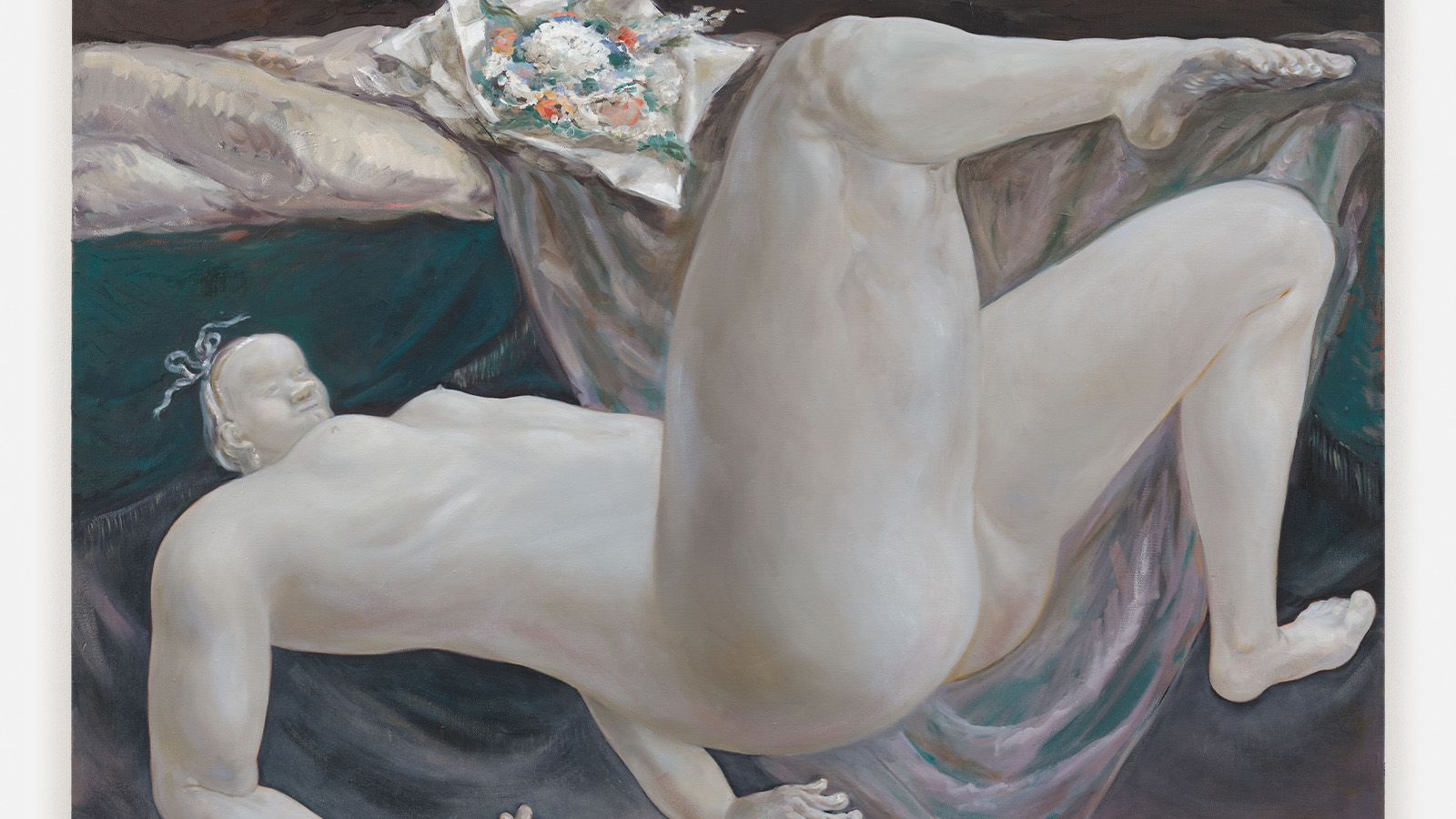 Louise Bonnet’s falling figures depict an emotional narrative to be felt rather than told
Louise Bonnet’s falling figures depict an emotional narrative to be felt rather than toldLouise Bonnet’s solo exhibition 'Reversal of Fortune' at Galerie Max Hetzler in Berlin, nods to historical art references and the fragility of the human condition
By Tianna Williams
-
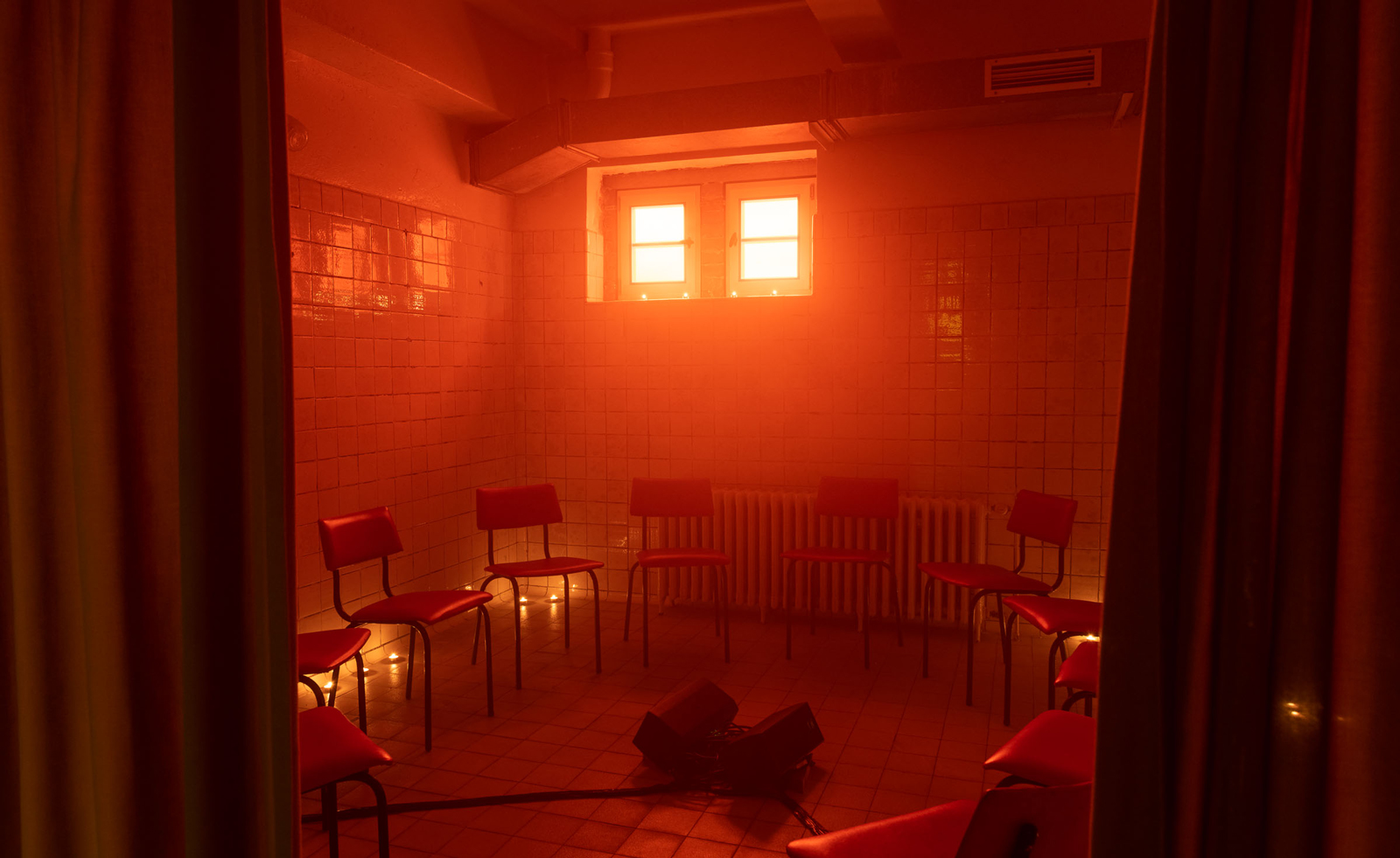 Inside E-WERK Luckenwalde’s ‘Tell Them I Said No’, an art festival at Berlin's former power station
Inside E-WERK Luckenwalde’s ‘Tell Them I Said No’, an art festival at Berlin's former power stationE-WERK Luckenwalde’s two-day art festival was an eclectic mix of performance, workshops, and discussion. Will Jennings reports
By Will Jennings
-
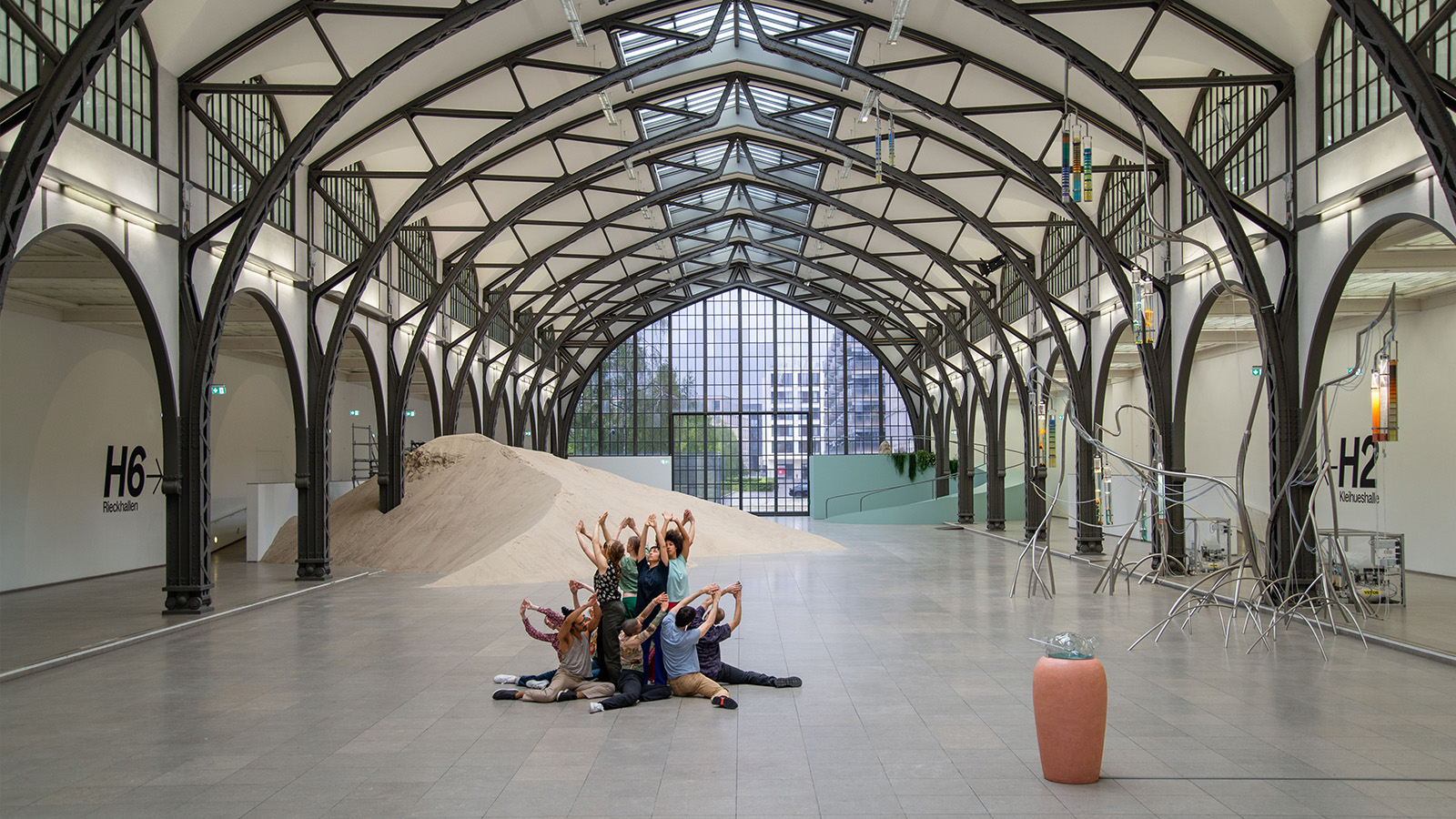 Alexandra Pirici’s action performance in Berlin is playfully abstract with a desire to address urgent political questions
Alexandra Pirici’s action performance in Berlin is playfully abstract with a desire to address urgent political questionsArtist and choreographer Alexandra Pirici transforms the historic hall of Berlin’s Hamburger Bahnhof into a live action performance and site-specific installation
By Alison Hugill
-
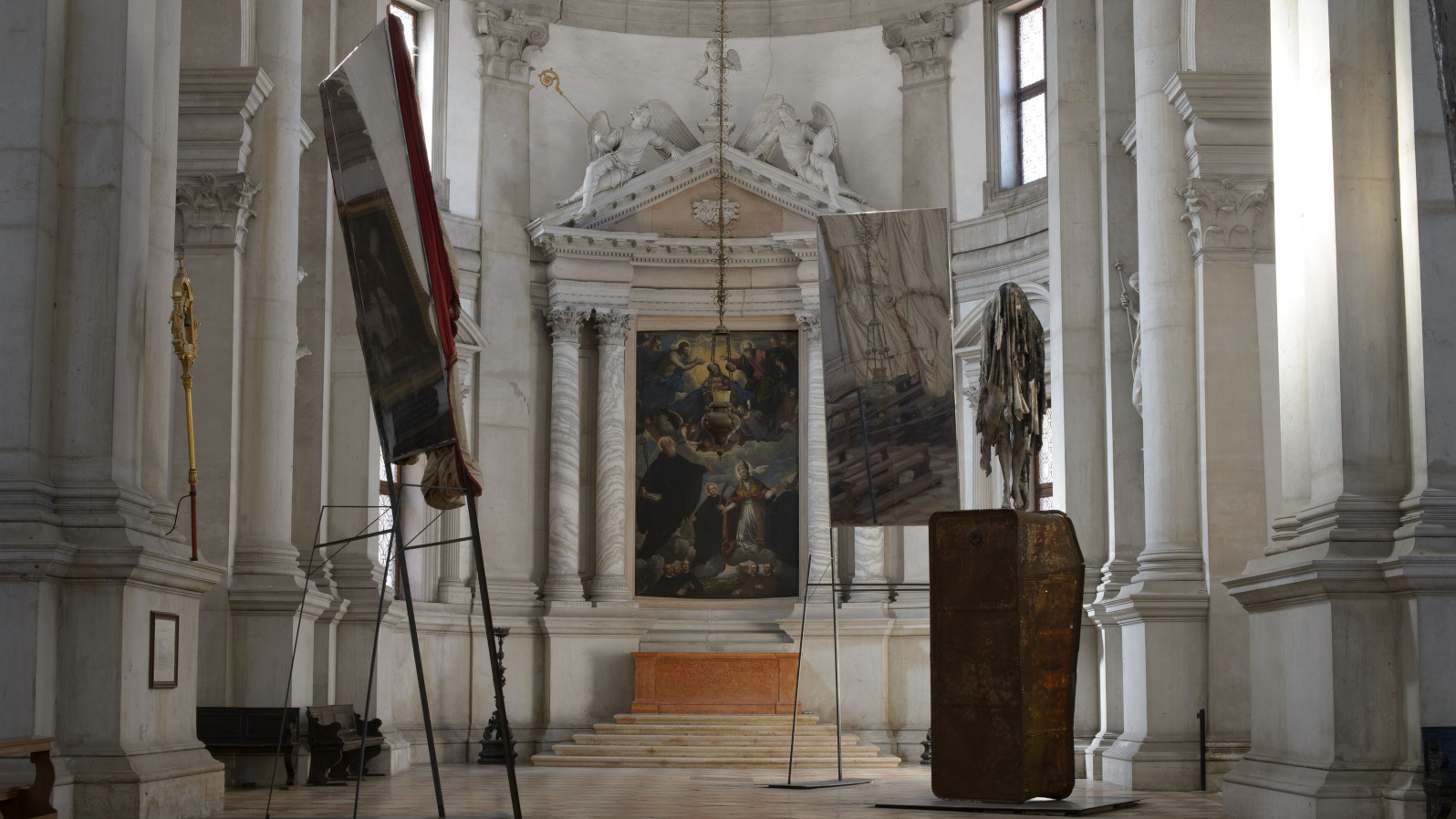 Berlinde De Bruyckere’s angels without faces touch down in Venice church
Berlinde De Bruyckere’s angels without faces touch down in Venice churchBelgian artist Berlinde De Bruyckere’s recent archangel sculptures occupy the 16th-century white marble Abbazia di San Giorgio Maggiore for the Venice Biennale 2024
By Osman Can Yerebakan
-
 Lawrence Lek’s depressed self-driving cars offer a glimpse of an AI future in Berlin
Lawrence Lek’s depressed self-driving cars offer a glimpse of an AI future in BerlinLawrence Lek’s installation ‘NOX’, created with LAS Art Foundation, takes over Berlin’s abandoned Kranzler Eck shopping centre
By Emily Steer
-
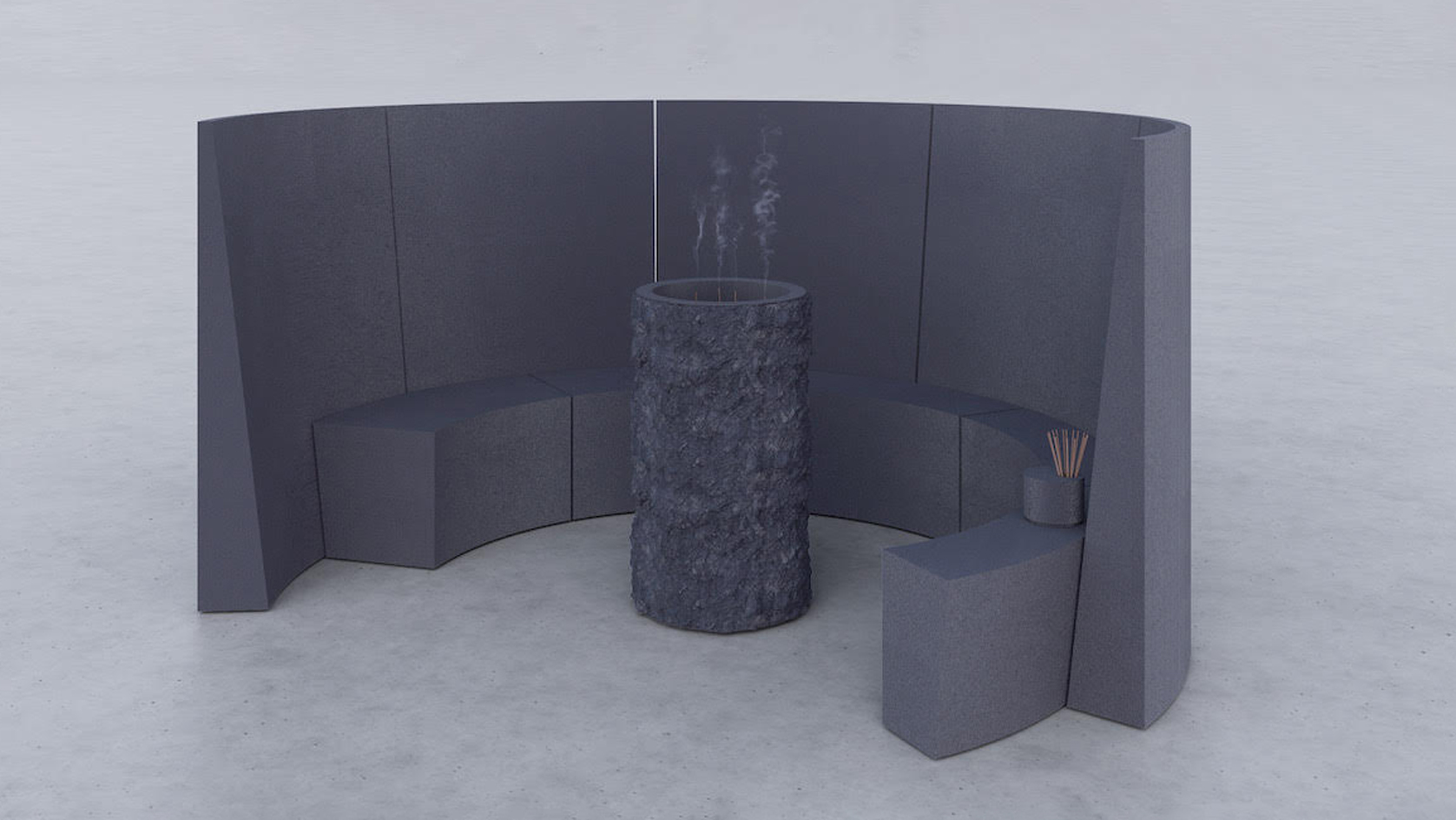 John Pawson unveils first-ever sculpture in Tokyo exhibition
John Pawson unveils first-ever sculpture in Tokyo exhibitionAt The Mass, Tokyo, British architect John Pawson stages his first solo exhibition in Japan, revealing his first sculpture and a new photography series
By Harriet Lloyd-Smith
-
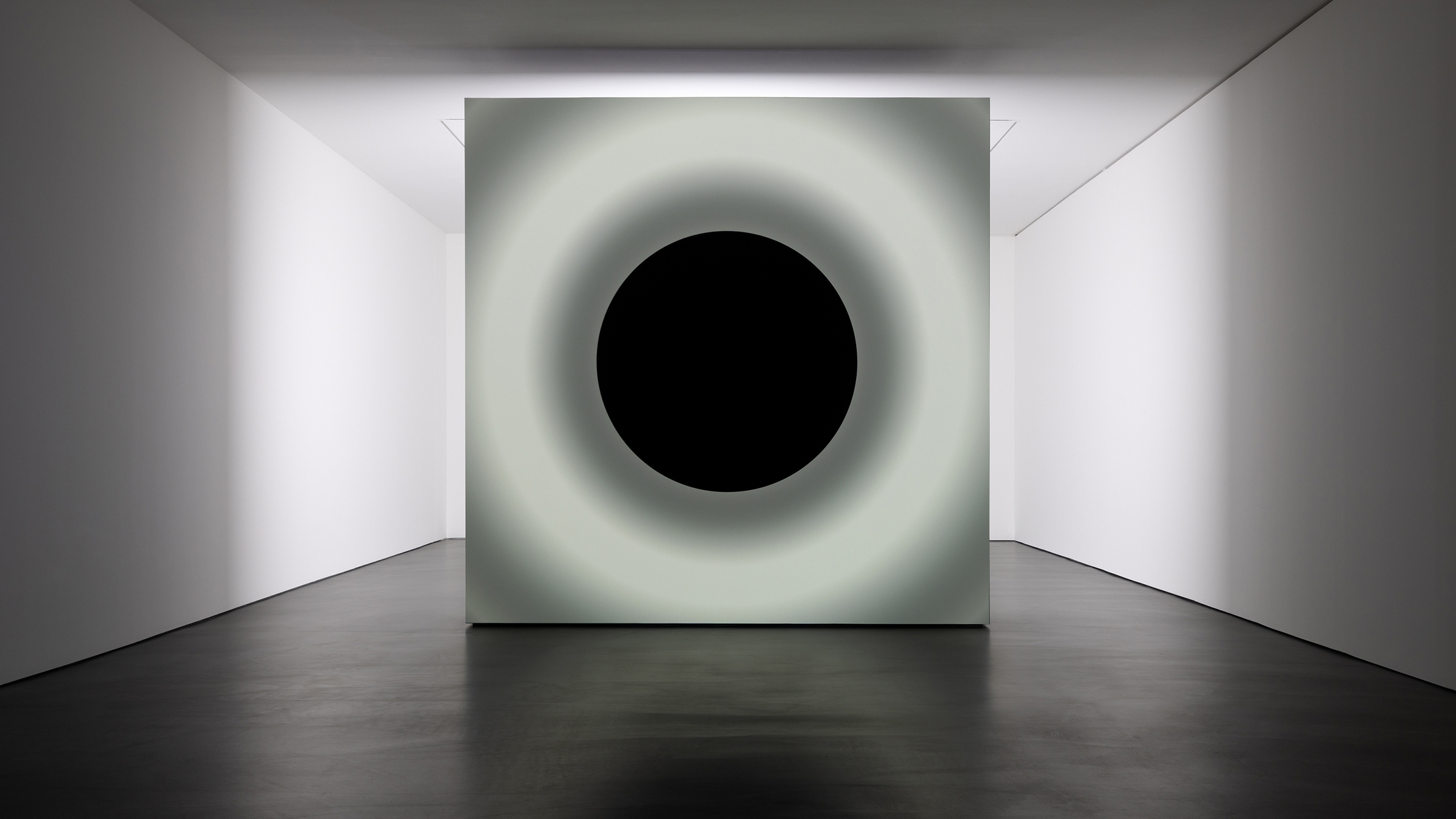 Ryoji Ikeda and Grönlund-Nisunen saturate Berlin gallery in sound, vision and visceral sensation
Ryoji Ikeda and Grönlund-Nisunen saturate Berlin gallery in sound, vision and visceral sensationAt Esther Schipper gallery Berlin, artists Ryoji Ikeda and Grönlund-Nisunen draw on the elemental forces of sound and light in a meditative and disorienting joint exhibition
By Harriet Lloyd-Smith